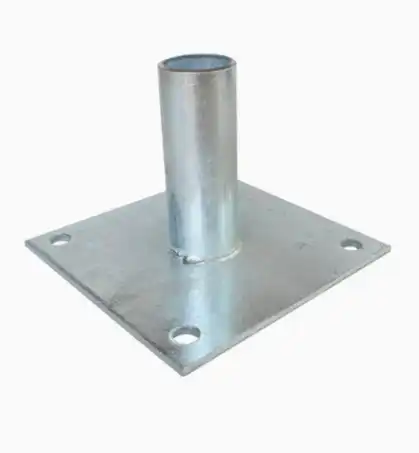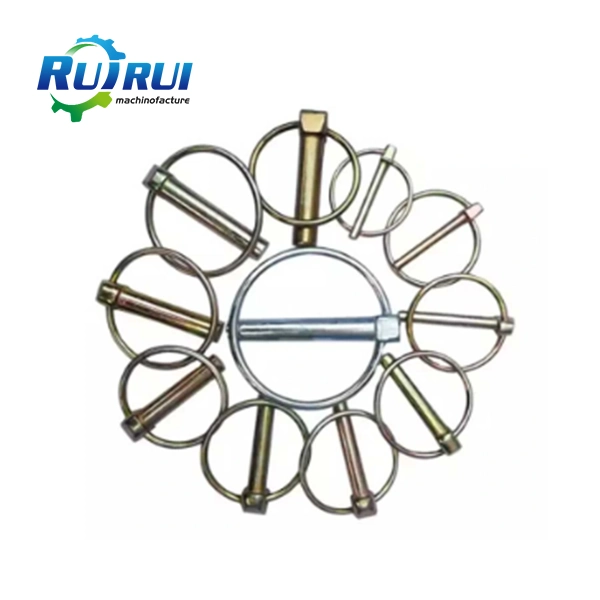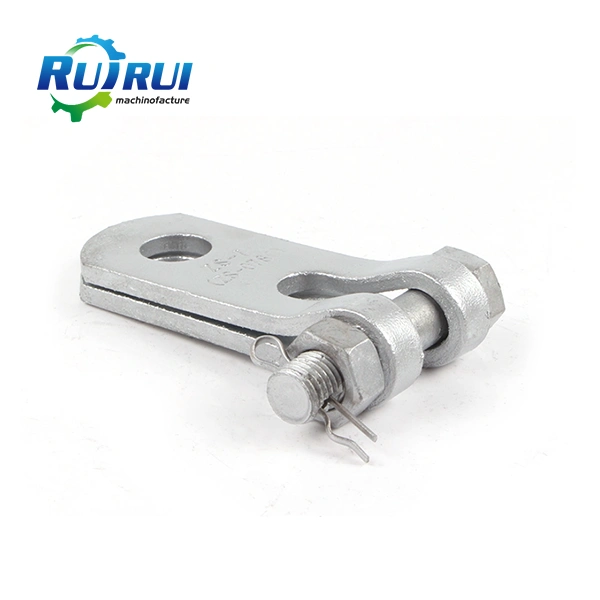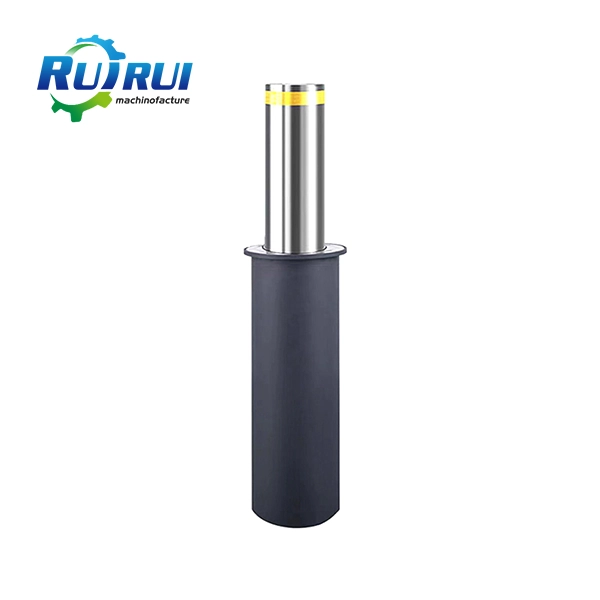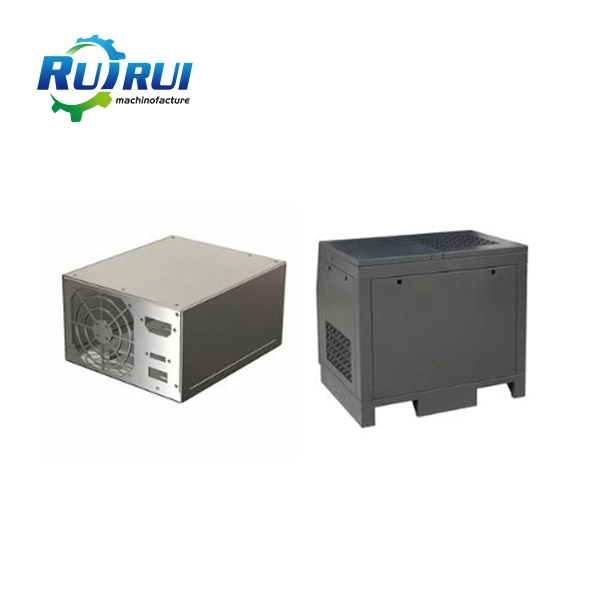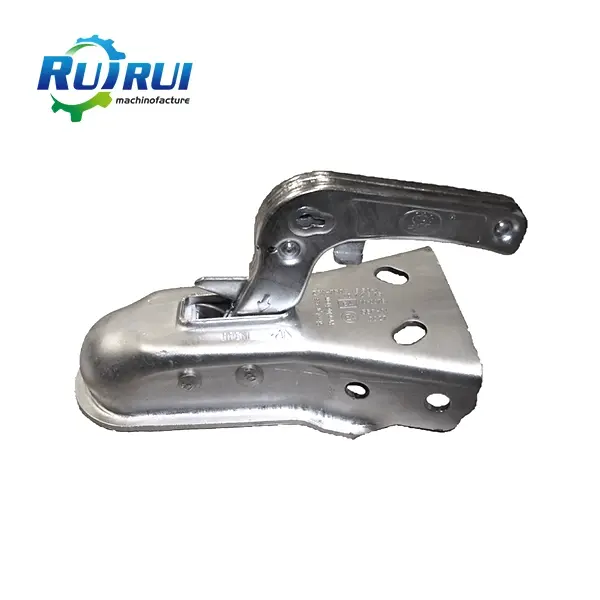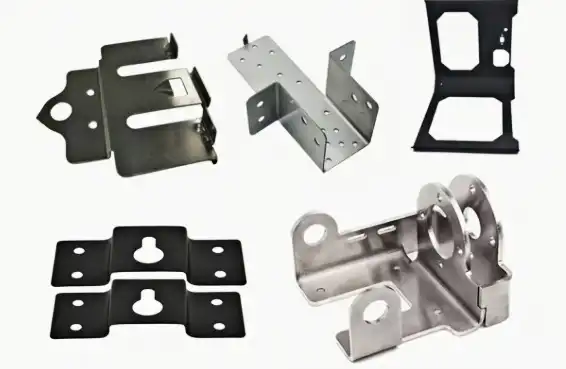What is a pump cover plate?
2024-09-26 10:22:10
A pump cover plate is an essential component in various pumping systems, playing a crucial role in protecting and enhancing the performance of pumps. This blog post delves into the intricacies of pump cover plates, exploring their functions, types, and importance in industrial and urban applications. Whether you're a professional in the machinery industry or simply curious about urban infrastructure, understanding it can provide valuable insights into the mechanics of fluid systems and their role in maintaining efficient operations. Join us as we uncover the world of it and their significance in modern engineering.
Understanding Pump Cover Plates
Definition and Purpose of Pump Cover Plates
A pump cover plate, also known as a pump end cover or pump head cover, is a vital component that serves as a protective barrier for the internal mechanisms of a pump. This sturdy piece of equipment is typically made from durable materials such as cast iron, stainless steel, or high-grade polymers, depending on the specific application and environmental conditions. The primary purpose of a pump cover plate is to enclose and safeguard the pump's internal components, including the impeller, bearings, and seals, from external contaminants and potential damage.
In addition to its protective function, the pump cover plate plays a crucial role in maintaining the pump's operational efficiency. It helps to create a sealed environment within the pump, ensuring that the fluid being pumped is directed properly through the system. This seal is essential for maintaining pressure and preventing leaks, which could otherwise lead to reduced performance or even pump failure.
Components and Design Features
The design of a pump cover plate is carefully engineered to optimize its functionality and durability. Key components and features of a typical pump cover plate include:
- Mounting holes: These allow for secure attachment to the pump body.
- Gasket groove: A recessed area that accommodates a gasket to ensure a tight seal.
- Inspection ports: Small openings that enable visual inspection of internal components without full disassembly.
- Cooling fins: In some designs, these help dissipate heat generated during pump operation.
- Drainage channels: These facilitate the removal of any fluid that may accumulate around the seal area.
The specific design of a pump cover plate can vary significantly depending on the type of pump, its intended application, and the operating conditions it must withstand. Engineers often employ advanced computer-aided design (CAD) software to optimize the plate's geometry, ensuring maximum strength and minimal material usage.
Materials Used in Pump Cover Plate Manufacturing
The choice of material for a pump cover plate is critical to its performance and longevity. Common materials include:
- Cast Iron: Offers excellent durability and cost-effectiveness for many standard applications.
- Stainless Steel: Provides superior corrosion resistance, making it ideal for harsh environments or when pumping corrosive fluids.
- Bronze: Often used in marine applications due to its resistance to saltwater corrosion.
- High-Performance Polymers: Lightweight and chemical-resistant, suitable for specific industrial applications.
- Ductile Iron: Combines the strength of steel with the ease of casting, offering improved impact resistance over traditional cast iron.
The selection of material depends on factors such as the pump's operating pressure, temperature range, fluid characteristics, and environmental conditions. For instance, a pump cover plate for a wastewater treatment plant might require a different material than one used in a food processing facility due to varying hygiene and chemical resistance requirements.
Functions and Importance of Pump Cover Plates
Protection of Internal Components
One of the primary functions of a pump cover plate is to protect the internal components of the pump from external elements. This protective role is crucial for several reasons:
- Debris Exclusion: The cover plate acts as a barrier, preventing dust, dirt, and other particulates from entering the pump mechanism. This is particularly important in industrial or outdoor settings where environmental contaminants are prevalent.
- Moisture Protection: In applications where humidity or liquid splashes are common, the pump cover plate helps to keep moisture away from sensitive internal parts, reducing the risk of corrosion and electrical shorts in motor-driven pumps.
- Impact Resistance: The sturdy construction of it provides a layer of protection against accidental impacts or falling objects, which could otherwise damage delicate internal components.
- Temperature Regulation: Some pump cover plates are designed with heat dissipation features, helping to maintain optimal operating temperatures for the pump's internal parts.
By fulfilling these protective functions, pump cover plates significantly contribute to extending the operational life of pumps and reducing the frequency of maintenance and repairs.
Maintaining Pressure and Efficiency
Beyond protection, pump cover plates play a crucial role in maintaining the pressure and efficiency of the pumping system:
- Pressure Containment: The cover plate forms part of the pump's pressure boundary, helping to contain the fluid being pumped and maintain the necessary operating pressure within the system.
- Flow Direction: By enclosing the pump chamber, the cover plate ensures that the fluid follows the intended path through the pump, optimizing flow patterns and efficiency.
- Seal Support: Many pump cover plates incorporate features that support and protect the pump's sealing mechanisms, which are critical for preventing leaks and maintaining pressure.
- Cavitation Prevention: Properly designed cover plates can help reduce the risk of cavitation by ensuring smooth fluid flow and maintaining appropriate pressure conditions within the pump.
These efficiency-related functions are essential for ensuring that pumps operate at their designed capacity, consuming minimal energy while delivering the required fluid flow and pressure.
Facilitating Maintenance and Inspection
Well-designed pump cover plates also contribute significantly to ease of maintenance and inspection:
- Access Points: Many cover plates feature strategically placed access ports or removable sections that allow for visual inspection or minor maintenance without complete disassembly of the pump.
- Quick Disassembly: The design of pump cover plates often allows for relatively easy removal, providing access to internal components when more extensive maintenance or repairs are necessary.
- Wear Indicators: Some advanced it incorporate wear indicators or monitoring points that help maintenance personnel assess the condition of internal components without disassembly.
- Standardization: In many pump designs, cover plates are standardized, allowing for easier replacement and reducing downtime during maintenance operations.
By facilitating easier maintenance and inspection, pump cover plates help to ensure that pumps receive timely care, preventing unexpected failures and prolonging the overall lifespan of the equipment.
Applications and Variations of Pump Cover Plates
Industrial Pump Cover Plates
In industrial settings, pump cover plates are utilized across a wide range of applications, each with its unique requirements:
- Chemical Processing: Pump cover plates in chemical plants often require exceptional corrosion resistance and may be made from specialized alloys or lined with protective coatings.
- Oil and Gas Industry: Here, it must withstand high pressures and often corrosive fluids, necessitating robust materials and precision engineering.
- Mining Operations: Slurry pumps used in mining typically have reinforced cover plates designed to withstand the abrasive nature of mineral slurries.
- Food and Beverage Production: In this industry, it must meet strict hygiene standards and are often made from polished stainless steel for easy cleaning and sanitation.
- Wastewater Treatment: Pump cover plates in sewage and wastewater applications are designed to resist corrosion from various chemicals and biological agents.
The diversity of industrial applications necessitates a wide range of specialized pump cover plate designs, each tailored to meet specific operational challenges and regulatory requirements.
Residential and Commercial Water Systems
In residential and commercial settings, pump cover plates are commonly found in various water systems:
- Well Pumps: Cover plates for submersible well pumps are designed to protect the motor and electrical components from water ingress.
- Swimming Pool Pumps: These cover plates often incorporate features for easy access to strainer baskets and are made from materials resistant to pool chemicals.
- Booster Pumps: In multi-story buildings, booster pump cover plates are engineered to withstand the higher pressures required to deliver water to upper floors.
- Irrigation Systems: Cover plates for irrigation pumps are typically designed for outdoor use, with UV-resistant materials and weather-sealing features.
- HVAC Systems: In commercial buildings, chilled water pump cover plates may include insulation to prevent condensation and energy loss.
The design of pump cover plates in these applications often focuses on durability, ease of maintenance, and aesthetic considerations, as they may be visible in residential or commercial spaces.
Specialized Pump Cover Plates in Urban Infrastructure
Urban infrastructure relies on numerous specialized pumping systems, each with its unique pump cover plate requirements:
- Stormwater Management: Pump stations for flood control use heavy-duty cover plates designed to withstand submersion and potential debris impact.
- Municipal Water Supply: Large-scale water distribution pumps require cover plates engineered for continuous operation and ease of maintenance to ensure uninterrupted service.
- Fountain Systems: Decorative water features in urban spaces use it that are both functional and aesthetically pleasing, often integrated into the overall design.
- Underground Utility Tunnels: Pumps used in these environments have cover plates designed for confined spaces and may include additional safety features.
- Urban Heating and Cooling Systems: District heating and cooling networks utilize pumps with cover plates optimized for thermal management and energy efficiency.
In urban infrastructure applications, it must not only meet technical requirements but also comply with various municipal codes and regulations governing public safety and environmental protection.
Conclusion
Pump cover plates are indispensable components in various pumping systems, offering protection, efficiency, and ease of maintenance. From industrial processes to urban infrastructure, these unassuming yet crucial parts play a vital role in ensuring the smooth operation of countless fluid handling applications. As technology advances, we can expect to see further innovations in pump cover plate design, materials, and functionality, contributing to even more efficient and reliable pumping solutions across diverse sectors. If you want to get more information about this product, you can contact us at info@qdkshd.com.
References
1. "Pump Handbook" by Igor J. Karassik, Joseph P. Messina, Paul Cooper, and Charles C. Heald
2. "Centrifugal Pumps: Design and Application" by Val S. Lobanoff and Robert R. Ross
3. "Pump Characteristics and Applications" by Michael W. Volk
4. "Practical Centrifugal Pumps: Design, Operation and Maintenance" by Paresh Girdhar and Octo Moniz
5. "Pumping Station Design" by Garr M. Jones, Robert L. Sanks, George Tchobanoglous, and Bayard E. Bosserman
6. "Seals and Sealing Handbook" by Robert K. Flitney
Send Inquiry
Related Industry Knowledge
- What Are U Bolts Used For?
- What is a Mounting Bracket?
- What was the purpose of a pump cover?
- What is a pump cover plate?
- How do link plates contribute to structural integrity?
- How do you install a link plate?
- What materials are used for street furniture?
- What materials are link plates made from?
- What are the different types of bollards?
- What is a link plate used for?
